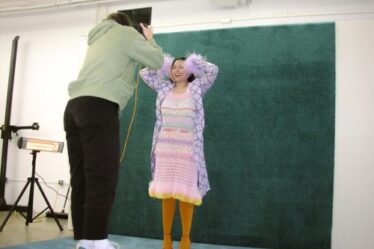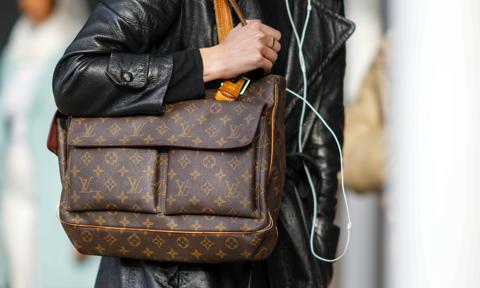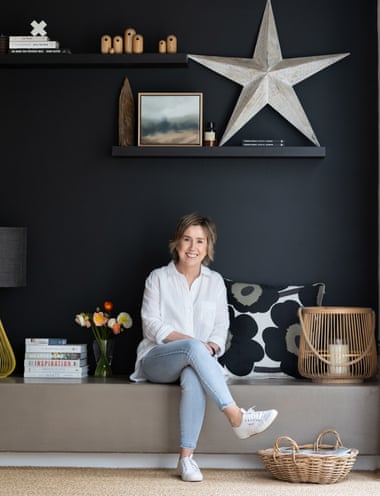
Most of the “stay safe, stay home” trends from the past two years have burned brightly before falling out of favour. Banana bread once had a stranglehold on our Instagram feeds, but it’s been a long time between loaves. Puzzles, similarly, no longer dominate the Saturday evening agenda.
But one pandemic-forged obsession appears to only be growing in demand: home organisation.
“I have never been as busy as I am now,” says Adelaide-based professional organiser Sarah Shanahan.
Organisation has become its own television genre. In Australia, there is Nine’s Space Invaders, led by home organiser Peter Walsh. In the US, HGTV’s Hot Mess House, hosted by “Clutterbug” Cassandra Aarssen, has just been renewed for a third season.
But the biggest names belong to Netflix: Marie Kondo and The Home Edit’s Clea Shearer and Joanna Teplin. While Kondo’s method of keeping objects that spark joy was already popularised by her bestselling books, Shearer and Teplin have given millions a seductive glimpse into a different organising philosophy: a world of labelled canisters, drawer dividers and clear, acrylic drawers.
These reality shows, punctuated by handy how-tos, allow audiences to take organisational fandom into their own hands (and store it neatly within rows of compact stacking tubs.
However, as Shanahan notes, “just like anyone can mow the lawn, not everybody wants to”. And now, thanks to Shanahan and others like her, not everybody has to.
“We are hiring new staff nearly every week to keep up with client inquiries,” says Amy Revell, co-owner and CEO of home organisation business The Art of Decluttering. The company’s team of 40 services “hundreds and hundreds of clients each year” nationally and its weekly podcast has had more than 3.3m listens to date.
“In the last 12 months we’ve expanded to regional and rural areas, as well as in three capital cities,” Revell says.
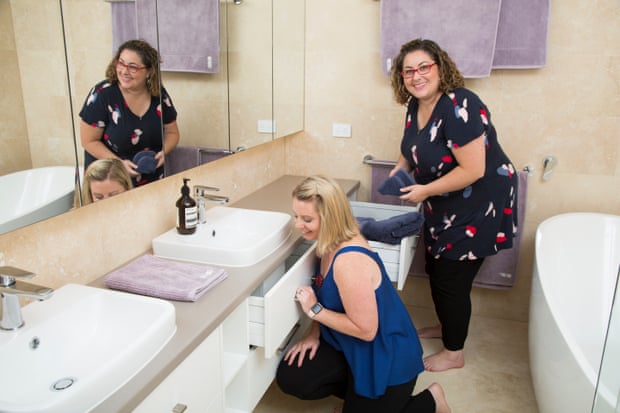
Michael Cleghorn, CEO and founder of global trend forecasting agency MC&Co, says the pandemic forced us to confront a new home paradigm. “People sought comfort through control and order, emotionally,” he says. “Practical needs [also] became apparent through forced isolation.”
Cleghorn forecasts the growing interest in home organisation will continue to maintain a “strong velocity”, noting it was also trending prior to the pandemic.
According to Google Trends, spikes in search interest for home organisation coincided with Australia’s lockdowns, but “home organisation” and “pantry organisation” searches were already on the rise. There is also a passionate social media community, with TikTok’s ‘home organisation Australia’ tag boasting more than 420m views.
As for Australia’s approach to interior organisation, Cleghorn cites a combination of influences from around the world, including the popularity of minimalist Scandinavian aesthetics.
The US tends towards the accumulation of “things”, evident in the success of big box retailers such as The Container Store. “More gadgets, more problem solving, life-enhancing ‘stuff’ and larger suburban home footprints,” Cleghorn says. “Australia tends to be a blend of more European and US trends.”
He also notes an increase in “the desire to store and organise in more sustainable materials, such as recycled boards, glass and plantation timbers,” reflecting a long-term trend of reducing personal impact on the environment.
The Swedish retail giant Ikea is capitalising on this desire for eco-friendly solutions by increasing the number of decluttering products designed with recycled or sustainable materials.
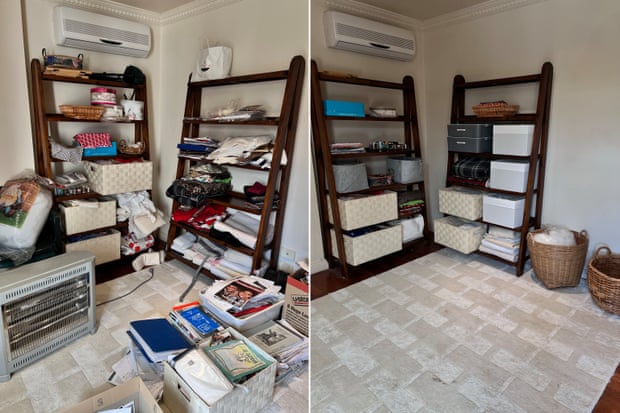
Not just for celebrities
As our interest in storage sustainability changes, so too does the face of home organisation, which is no longer perceived as a folly only for affluent individuals and celebrities (hello Khloé Kardashian). Shanahan and Revell’s clientele is diverse – from parents juggling family life to bereaved caretakers, Airbnb managers, home movers and downsizers.
Beck Quade, a Sydney-based business owner, first engaged home organisation services for an overseas move. “That whole part of moving is so stressful, particularly if you’re a busy parent or businessperson,” she says. “It’s worth it … just to take out all that stress and time. And they’re just better at it than me.”
Quade has also sought professional organiser expertise at emotional junctions in her life, from recalibrating her house as her family expanded to packing up the home of her late mother-in-law. “Sometimes it’s just about having someone holding your hand throughout an otherwise stressful process.”
Revell and her colleagues are part of a growing cohort also offering services through the national disability insurance scheme (NDIS) for people living with physical disabilities or neurodiversities. “Whether you are living with or caring for someone with a disability, there can be additional hurdles to being able to maintain a safe, organised and clutter-free home,” she says.
“We are passionate about helping people live their best lives, and our services through NDIS are part of this.”
An organised home can also act as a form of self-care, a benefit that was reinforced during the pandemic. “Our physical surroundings have a significant impact on our mental health and emotional wellbeing,” says Geetu Vanjani, a counsellor at online therapy practice the Indigo Project. “Our external environment [gives] powerful sensory cues for our executive functioning and nervous system.”
So will decluttering, efficiency and stackable storage continue to dictate the future of interior styling? Not entirely, Cleghorn believes. “There is always ying and yang,” he says.
“As much as there is an obsession with … a more minimal approach to life and living, there is also an increased trend in maximalism and increased accessorising. More stuff, less organisation.” A new streaming series awaits.
Home organisation philosophies, categorised
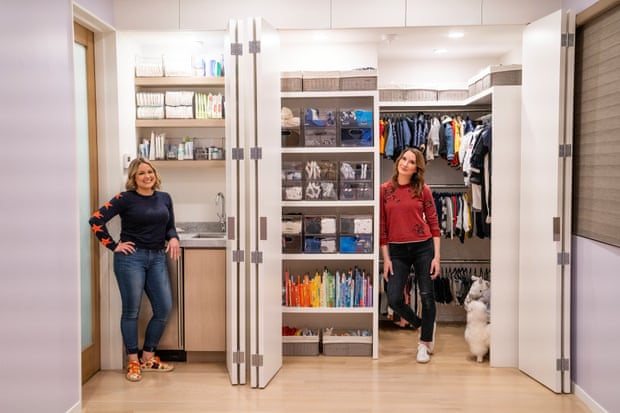
Where you’ve seen them: Netflix, bookstores, and most of all on Instagram.
Philosophy: Edit, categorise, contain. In other words: you can have as much stuff as you want, as long as you’ve got the space to keep it all in clear, acrylic boxes.
Cost: High – all those pretty containers stack up quickly.
Effort: High at first, but relatively easy to maintain, thanks to the highly systematised categorising process (and all the boxes).
Signature move: Sorting items in “rainbow order”.
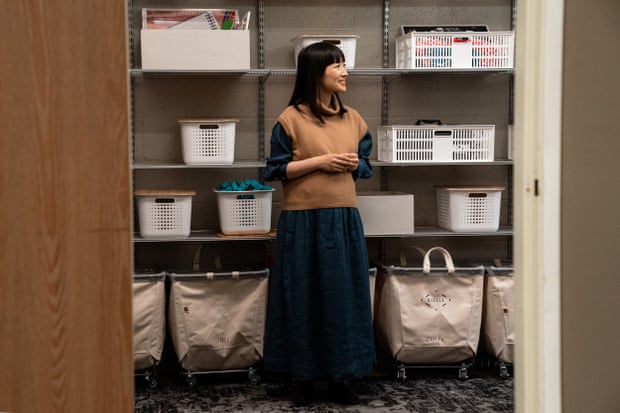
Where you’ve seen her: Netflix and on bestseller book lists.
Philosophy: Does this item “spark joy”? Yes? Keep. No? Toss. Simple!
Cost: Financially, low – the KonMari method steers clear of extra storage purchases. But emotionally, high – Kondo recommends keeping fewer than 30 books, one of many breakups guaranteed to bruise the heart.
Effort: Initially high. The organising must happen all at once, rather than tidying over time, but the resulting minimalism promises effortless upkeep.
Signature move: Category attack. Declutter by category rather than location, beginning with clothes and ending with sentimental items.

Where you’ve seen him: Nine’s Space Invaders and in bookstores.
Philosophy: Decluttering is about feelings. Internal conflict resolution is required before spatial conflict resolution.
Cost: Medium – clear containers are on the shopping list, but you might uncover forgotten gems ripe for resale.
Effort: High (see below).
Signature move: Take things offsite. By removing all clutter from its room of origin you can assess it with a fresh perspective, before sorting and storing.
Where you’ve seen her: in bookstores and as a columnist for ADDitude Magazine, a publication for people living with ADD and ADHD.
Philosophy: Ruthless efficiency. Judicious minimalism meets extreme practicality.
Cost: Medium – you might require additional storage depending on your degree of ruthlessness.
Effort: Adopting Pinsky’s merciless mindset can be tough, but once you’re on a roll it’s second nature.
Signature move: “Would you buy this yourself today?” If the answer is no (sentimental bric-a-brac included), it’s out.
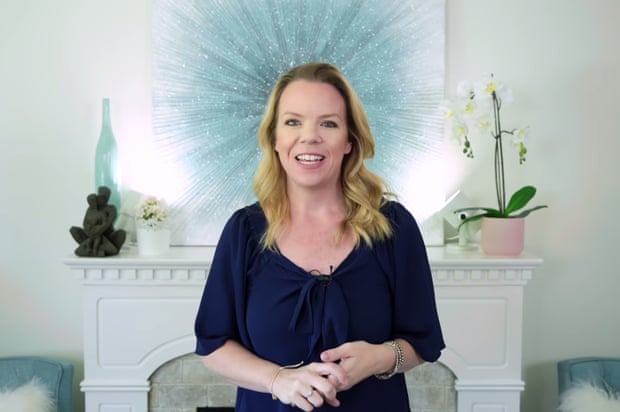
Where you’ve seen her: HGTV’s Hot Mess House, and YouTube, where her videos attract millions of views.
Philosophy: How you organise depends on one of four organisational styles, each named for an insect.
Cost: It depends on your bug. For a ladybug a few baskets will do; a bee will have to shell out for beautiful, open shelving.
Effort: Much like cost, that depends on you.
Signature move: The Clutterbug quiz.

